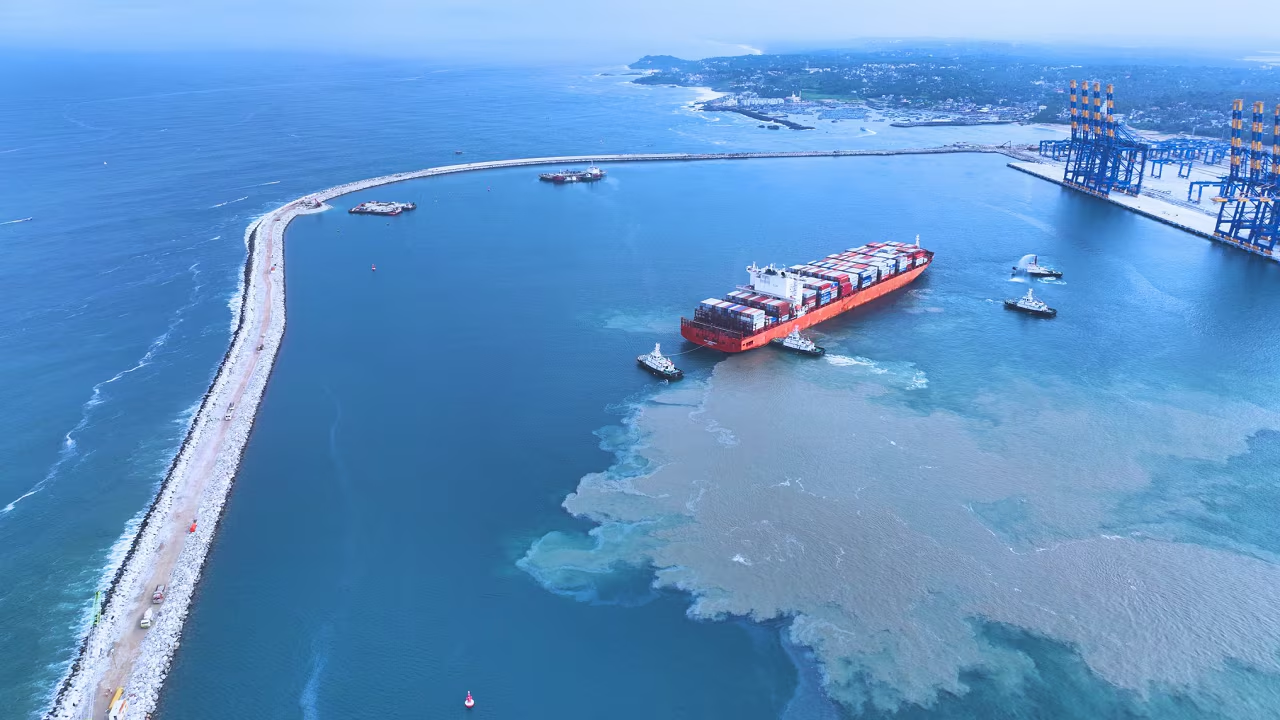The Vizhinjam International Seaport, nestled near Thiruvananthapuram in Kerala, is slated for inauguration on May 2, 2025, by Prime Minister Narendra Modi.
This ambitious project, a collaborative endeavour between the Kerala government, the central authorities, and Adani Ports, heralds the arrival of the nation’s first semi-automated and genuinely deep-water international container transshipment facility. Positioned strategically in close proximity to vital global shipping arteries, the port is anticipated to dramatically elevate India’s trade prowess and firmly establish Kerala as a pivotal nucleus within the global maritime network. Since its commercial commencement, this burgeoning maritime gateway has already processed an impressive 265 vessels and managed a substantial 5.48 lakh TEUs (Twenty-foot Equivalent Units), underscoring its operational readiness and potential. A significant milestone was achieved in July 2024 with the docking of the first Mother Ship, the MV San Fernando, a testament to the port’s deep-water capabilities. The development of this crucial infrastructure project has been undertaken through a Public-Private Partnership (PPP) framework, uniting the resources and expertise of the Government of Kerala and Adani Vizhinjam Port Private Ltd.
(AVPPL), following the concession agreement inked in 2015. The cumulative investment in this transformative project exceeds ₹18,000 crore, signifying the scale and importance of this undertaking. Notably, the Vizhinjam Port stands as India’s maiden greenfield port project initiated by a state government, setting a precedent for future infrastructure development. The strategic positioning of the Vizhinjam International Seaport offers a compelling advantage by significantly curtailing transit times for vessels navigating key international shipping routes. Its natural deep-water configuration enables the berthing of large-capacity cargo and container ships, a capability that will enhance efficiency and reduce logistical bottlenecks. The port is poised to act as a catalyst for regional trade, fostering stronger economic ties with Southeast Asia, the Middle East, and Africa. Beyond its trade-enhancing potential, the project is also expected to generate substantial employment opportunities and spur economic growth within Kerala, contributing to the socio-economic fabric of the region. Furthermore, this advanced infrastructure directly bolsters India’s “Make in India” initiative by providing a state-of-the-art facility to support increased manufacturing and trade activities.
The Adani Group, a key player in India’s port sector, will operate the Vizhinjam International Seaport, adding to their extensive portfolio of maritime facilities. The group currently manages seven ports along India’s western coastline, including major hubs like Mundra and Hazira, and eight ports on the eastern seaboard, such as Dhamra and Krishnapatnam. Their influence extends beyond national borders, with management responsibilities for international ports including Haifa Port in Israel, Dar es Salaam Port in Tanzania, and Colombo Port in Sri Lanka. Collectively, Adani Ports and SEZ (APSEZ) handle a significant 27% of India’s total port volumes, making their involvement in the Vizhinjam project a testament to its strategic importance. The inauguration of the Vizhinjam International Seaport represents more than just the opening of a new trade facility; it signifies India’s determined stride towards becoming a dominant force in global maritime commerce. The deep-water capability, coupled with its semi-automated operations, positions it as a next-generation port capable of handling the demands of modern shipping and contributing to a more efficient and potentially less carbon-intensive logistics ecosystem in the long run. As the first of its kind in India, its success could pave the way for similar sustainable infrastructure projects across the nation, aligning with the broader vision of creating eco-conscious and economically vibrant urban and trade centers. The impact of this port on Kerala’s economy and India’s trade landscape in the coming years will be closely watched by stakeholders across the globe.




